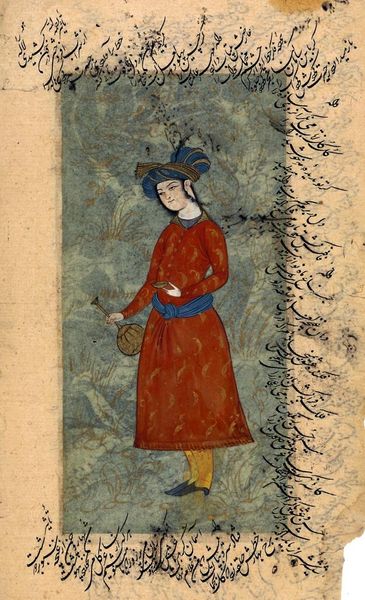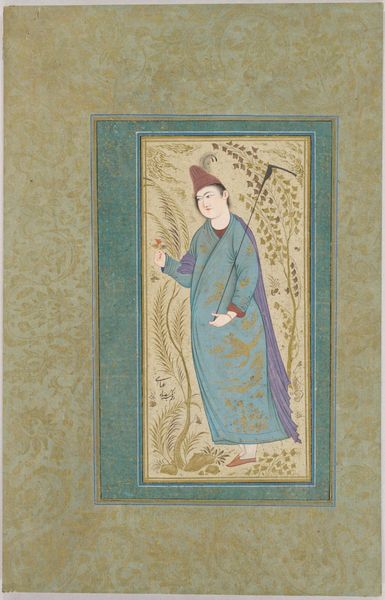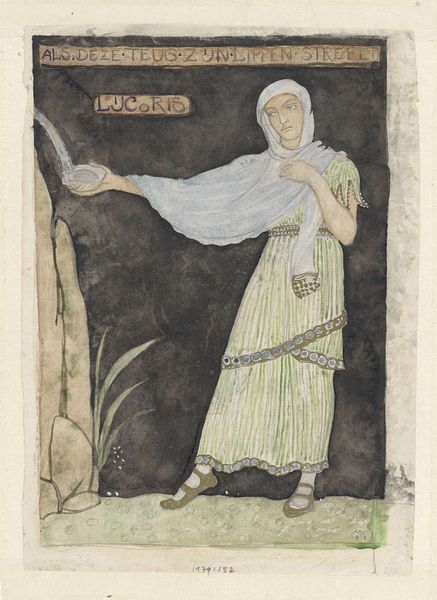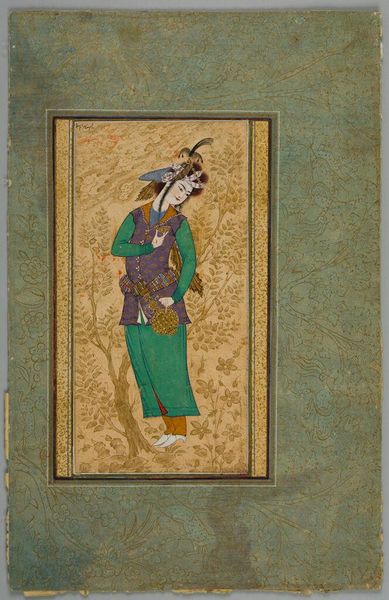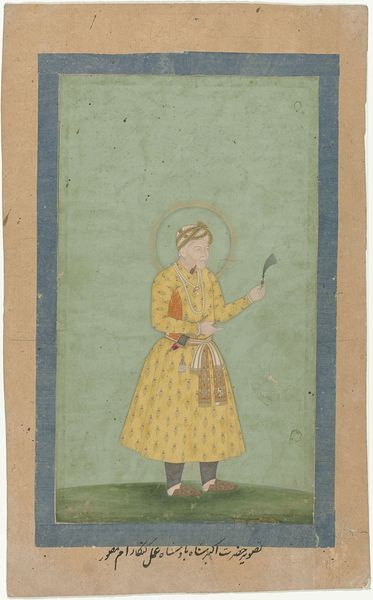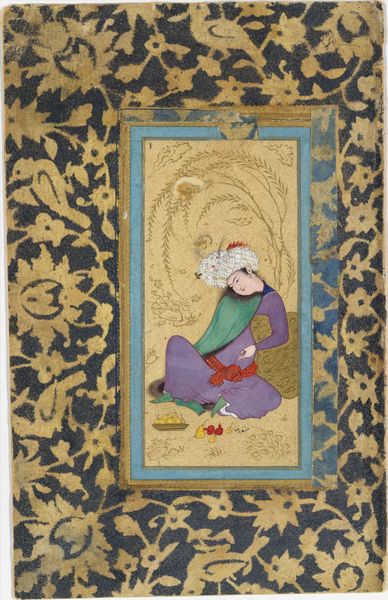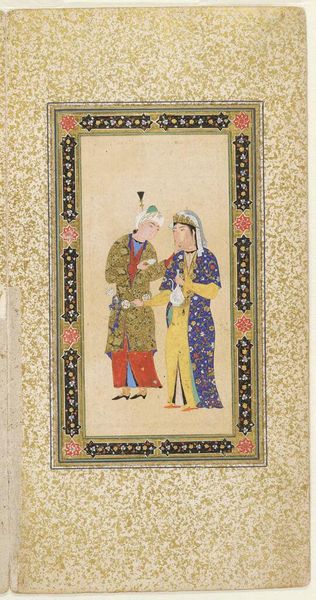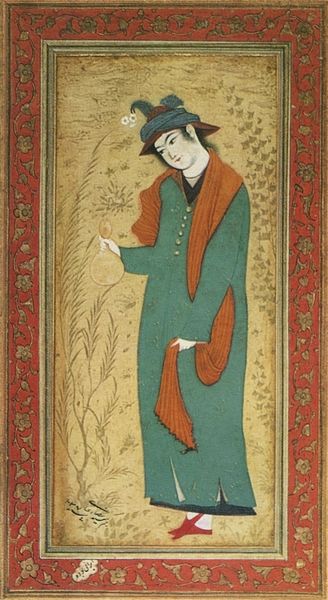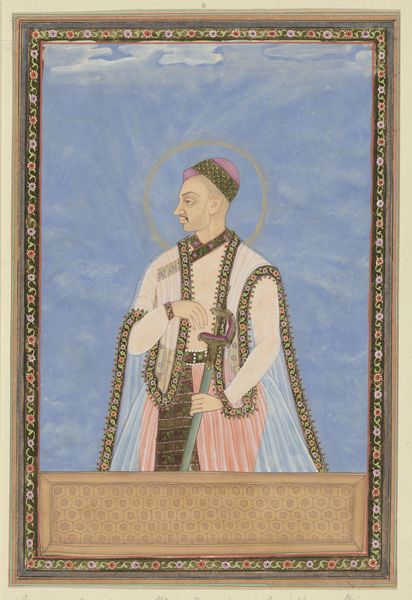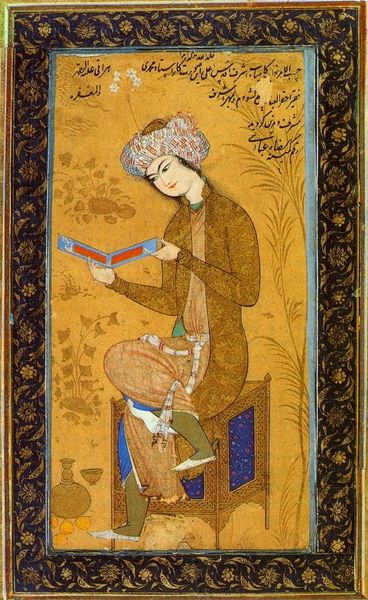
painting, watercolor
#
portrait
#
water colours
#
painting
#
asian-art
#
watercolor
#
coloured pencil
#
watercolour illustration
#
miniature
Copyright: Public domain
This is a 17th-century painting by Reza Abbasi, depicting a young woman in a white wrap, an emblem of purity and status within the cultural milieu of Safavid Persia. The gesture of the woman gently holding her veil is reminiscent of classical depictions of modesty. The veil, which reappears across cultures, from ancient Roman depictions of veiled Vestal Virgins to Renaissance portrayals of the Virgin Mary, is not merely a piece of cloth, but a symbol laden with complex meanings of protection, piety, and concealment. Tracing its evolution, we see how this symbol adapts, yet retains a core essence. In Abbasi’s painting, the veil subtly conveys a sense of grace and decorum, aligning with the aesthetic values of his time. This is further supported by the calligraphic inscriptions, which frame the central image. These elements tap into our collective memory, stirring feelings of reverence and introspection. The echoes of history resonate, proving that symbols, like migratory birds, traverse time, carrying echoes from distant lands and eras.
Comments
No comments
Be the first to comment and join the conversation on the ultimate creative platform.
